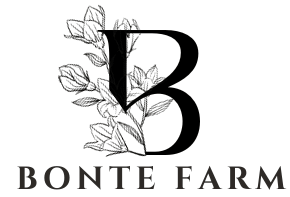Bonte Farm
Boronia crenulata 'Shark Bay': star-shaped flowers and aromatic foliage
Boronia crenulata 'Shark Bay': star-shaped flowers and aromatic foliage
Couldn't load pickup availability
Boronia crenulata 'Shark Bay': A Fragrant Delight
Boronia crenulata 'Shark Bay', commonly known as the Aniseed Boronia or simply Shark Bay Boronia, is a delightful evergreen shrub native to Western Australia. Its delicate, finely divided foliage and masses of small, fragrant, pink to deep rose-pink flowers create a charming display, particularly in spring. The foliage also emits a pleasant aniseed scent when crushed, adding another dimension to its appeal. This cultivar is particularly noted for its compact growth habit and profuse flowering.
A Fragrant Jewel of the Australian Flora
- Profuse Flowering: Showcases abundant, small, cup-shaped flowers in shades of pink to deep rose-pink, creating a beautiful and colorful display, especially in spring. The flowers are delicately fragrant.
- Finely Divided Foliage: Features fine, feathery, dark green foliage that adds a soft, delicate texture to the shrub. The foliage is aromatic, releasing an aniseed scent when crushed.
Botanical Characteristics:
- Scientific Name: Boronia crenulata 'Shark Bay'
- Common Name: Aniseed Boronia, Shark Bay Boronia
- Growth Habit: Compact, evergreen shrub with an upright to slightly spreading habit.
- Foliage: Finely divided, dark green, aromatic leaves.
- Mature Size: Typically reaches 2-3 feet (0.6-0.9 meters) tall and wide.
- USDA Hardiness Zones: 9-11 (tolerates light frost once established). Best suited to areas with mild winters and dry summers.
Cultivation and Care:
- Sunlight: Prefers a position with morning sun and afternoon shade, or dappled shade throughout the day. Avoid hot, full afternoon sun, especially in hotter climates.
- Soil: Requires well-drained soil. Like many Australian natives, boronias are susceptible to root rot in poorly draining soils. Sandy or gravelly soils are ideal. Avoid heavy clay soils or amend them extensively with coarse sand and organic matter to improve drainage. Raised beds or containers are highly recommended in areas with heavy clay soils.
- Water: Requires regular watering, especially during establishment and dry periods. However, avoid overwatering and ensure good drainage. Allow the soil surface to dry slightly between waterings.
- Fertilizer: Generally does not require fertilization. Boronias are sensitive to phosphorus, so avoid using fertilizers with high phosphorus content. If necessary, use a low-phosphorus native plant fertilizer sparingly in spring.
- Temperature: Prefers mild temperatures and tolerates some light frost once established. Young plants are more susceptible to frost damage. Protect from heavy frost.
Landscape Use:
- Small Gardens: Its compact size makes it ideal for small gardens, courtyards, and containers.
- Rock Gardens: Adds a delicate touch to rock gardens and native plant gardens.
- Border Planting: Works well as a border plant or in mixed shrubberies.
- Fragrant Gardens: Its aromatic foliage makes it a valuable addition to fragrant gardens.
Wildlife Attraction:
- Pollinators: The flowers attract various pollinators, including bees and small native insects.
Pest and Disease Resistance:
Generally resistant to most pests and diseases when grown in well-drained conditions. Root rot is the primary concern, especially in poorly draining soils. Good drainage and proper watering practices are essential for preventing root rot. Maintaining good air circulation can also help prevent fungal issues.
Propagation:
Can be propagated by cuttings. Cuttings are best taken in late summer or early fall from semi-hardwood growth. Propagation from seed is possible but more challenging.
Incorporating Boronia crenulata 'Shark Bay' into Your Landscape:
When designing your landscape, consider the following tips:
- Companion Plants: Pair with other Australian native plants that prefer similar conditions, such as other Boronia species, Grevilleas, and small dryland shrubs.
- Spacing: Allow adequate spacing for its mature size to ensure good air circulation.
- Pruning: Lightly prune after flowering to maintain shape and encourage bushier growth. Avoid heavy pruning.
- Soil Amendment: Ensure excellent drainage by amending heavy clay soils with coarse sand, gravel, and organic matter. Raised beds or containers are highly recommended in areas with poor drainage.
Relevant Keywords: Boronia crenulata 'Shark Bay', Aniseed Boronia, Shark Bay Boronia, Australian native plants, fragrant plants, small shrubs, flowering shrubs, pink flowers, fragrant foliage, low-maintenance plants, container plants, rock gardens, USDA zone 9, USDA zone 10, USDA zone 11, Western Australian flora.
Share








FAQs
Got a question? We are here to answer








